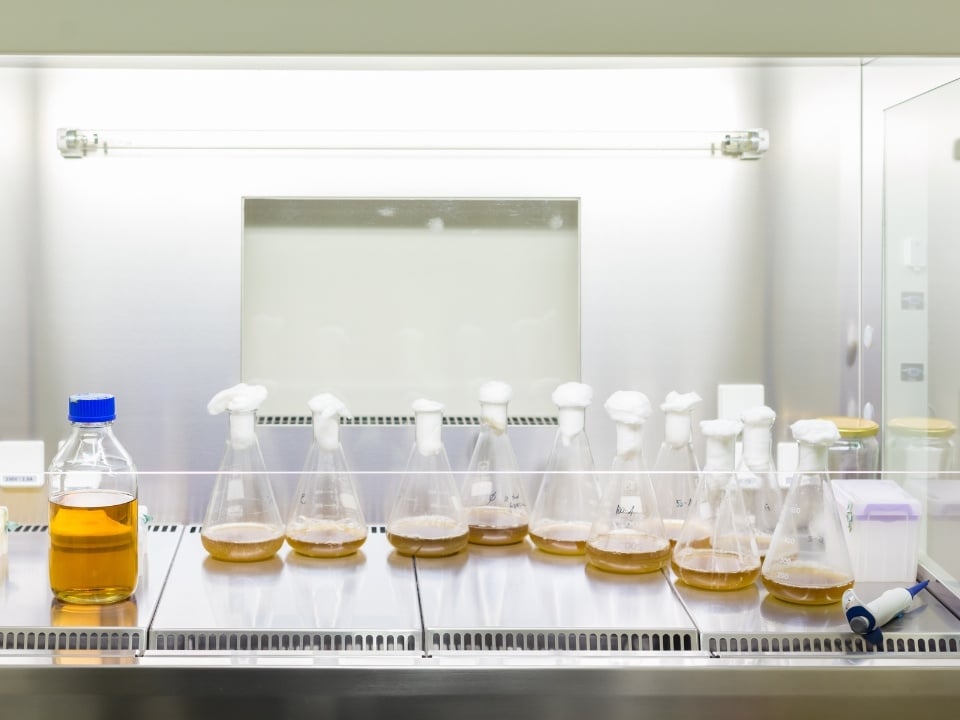Unlocking the Potential of CHO Cell Line Development

Imagine you’re in the middle of a project. You’ve just transfected your CHO cells with the gene for a life saving therapeutic protein, and you’re eager to identify the perfect cell line that will turn this idea into reality. But as days turn into weeks, and weeks into months, you realize the careful process of cell line testing, screening, optimizing feels like navigating in the dark with a weak flashlight.
For years, this has been the story of researchers developing CHO cell lines. The traditional workflow relies heavily on manual sampling and offline analysis, both time consuming and prone to error. It’s like trying to piece together a puzzle, where all the pieces are hidden in another room, and you have to pick them up and bring them to the puzzle individually!
But what if you had a way to illuminate the whole process in real time? This is where online monitoring enters the picture technology that is transforming the narrative of cell line development.
But behind the scenes, developing a robust CHO cell line is an intricate process that blends biology, engineering, and patience. This blog explores the science behind CHO cell line development, its challenges, and why it continues to be a cornerstone of modern biotechnology.
The Science Behind Cell Line Development
Cell line development begins with the transfection of CHO cells, where the genes encoding the product of choice, e.g. a therapeutic protein. The goal is to create a stable cell line capable of producing the protein of interest at high yields while maintaining consistent quality.
The process can be broken down into the following key steps:
1. Gene Integration and Expression- The desired gene is transfected into CHO cells, often using vectors that enable stable integration into the genome.
- Following transfection, cells are selected based on their ability to express the target protein. This typically involves the use of selection markers like antibiotic resistance genes.
2. Clone Selection
- Among the transfected cells, only a small percentage will stably express the protein at high levels.
- Scientists screen thousands of clones to identify those with optimal growth rates, productivity, and product quality.
- This step helps exclude non-stable or non-producing clones before a more detailed assessment.
3. Single-Cell Cloning
- To ensure consistency, high-performing clones are isolated and expanded from a single cell. This ensures the resulting population is genetically identical.
4. Process Optimization
- While selecting the top-performing clone, culture conditions, such as media composition, feeding strategies, and bioreactor parameters are often optimized in parallel.
- These optimizations help improve overall productivity and scalability, ensuring robust and reproducible protein production.
Why CHO Cells?
CHO cells are uniquely suited for cell line development in biopharmaceutical production for several reasons:
- Human like post translational modifications: CHO cells can glycosylate proteins in ways that are compatible with the human immune system, ensuring therapeutic efficacy and safety.
- Adaptability: They can be grown in suspension cultures, making them ideal for large-scale production in bioreactors.
- Robustness: CHO cells are resilient and can succeed chemically defined, serum-free media, reducing the risk of contamination.
- Regulatory Acceptance: Decades of use in therapeutic production mean CHO cells are well-documented and widely accepted by regulatory agencies.
Challenges in cell line development
While CHO cells are a powerful tool, the process of cell line development is not without its challenges:
- Long timelines
Developing a stable cell line can take 6–12 months, from transfection to final selection, delaying the path to clinical trials and commercialization. - Clone variability
Not all transfected cells behave the same. The inherent heterogeneity in CHO cells requires extensive screening to identify high-performing clones. - Quality Consistency
Ensuring that the selected cell line consistently produces proteins with the desired quality attributes (e.g., glycosylation) across batches can be challenging. - Scalability
A cell line that performs well in small-scale experiments must be able to scale up to industrial bioreactors without losing productivity or quality. - Regulatory Requirements
Regulatory agencies require extensive documentation and testing to demonstrate that the cell line is stable, safe, and capable of producing consistent products.
Scientific Advances in Cell Line Development
Over the years, significant scientific advancements have improved the efficiency and precision of CHO cell line development. These include:
- Genome Editing Tools
Techniques like CRISPR-Cas9 have made it possible to engineer CHO cells with targeted modifications, improving productivity and stability. - High-Throughput Screening
Automation and robotics now allow researchers to screen thousands of clones in parallel, dramatically reducing the time required for selection. - Omics Technologies
Genomics, transcriptomics, and metabolomics provide detailed insights into CHO cell biology, enabling the rational design of improved cell lines.
Looking Ahead
Cell line development in CHO cells remains at the forefront of biopharmaceutical innovation. The combination of scientific advancements and established technologies continues to refine the process, making it faster, more reliable, and capable of meeting the growing demand for complex biologics.
Real-time online monitoring, such as the solutions offered by Scientific Bioprocessing (SBI), provides continuous insights into key process parameters, enabling better control and optimization of culture conditions. These advancements help improve reproducibility, reduce manual sampling, and accelerate decision making in cell line development.
While challenges persist, the future is promising. As researchers continue to push the boundaries of what’s possible, CHO cell line development will undoubtedly play a pivotal role in delivering the next generation of life-saving therapies.